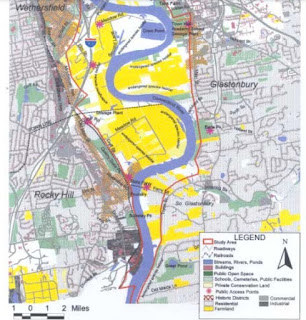No matter where you may venture to in the U.S. -- it seems you can find tribute/evidence of native American origins if you know where to look...
- Wangunk (“where the river bends”)
- Nayaug ("noisy waters")
- Naubuc (flat plains to the north”)
- Neipsic ("water near the hill") or Nipsic
The Native Americans of the present-day Glastonbury/Portland area were members of Algonkian-speaking tribes. They lived in clans of approximately 100 individuals and each group was ruled by a sachem or chief. Clans took names from features of the land where they were centered. Naubucs lived in the plains to the east, the flat area at the north end of town. Nayaugs lived a bit further south near the Noisy Water at the mouth of Roaring Brook (note: they were also known as the Red Hill Indians). Wangonks lived at the bend in the river behind today’s Town Hall, where the Connecticut River turned in the 1600s. The Neipsic springs first attracted Native Americans who came for the water's mystical healing powers. Today, the water still bubbles up from the hillsides in Glastonbury's J.B. Williams Park found on Neipsic Road.
The tribes were peaceful and farmed the land. In the summer, clans lived along the river in longhouses. In winter, they moved to the hills and lived in south- or west-facing caves.
- Knogscut ("place of wild goose') - Knogscut Mountain >
- Minnechaug ("berrylnd") - Even the golf course, when heading to Manchester, has a a Native American name!
Other Places Nearby
- Meshomasic (“the great snake” or “land of many snakes”) - State Park >
- Shenipsit (“at the great pool”) refers to the Shenipsit Lake, which the Shenipsit trail passes by











